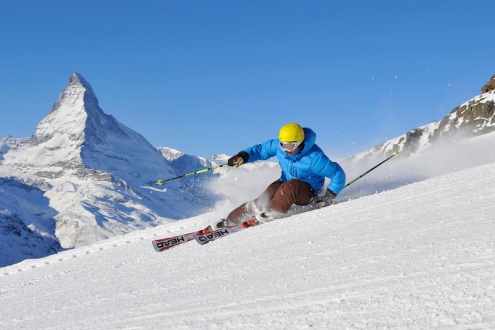Zermatt, Switzerland – Snow reliability
|
General snow cover: |
★★★★☆ | Rating of overall snow coverage across the ski area: 4/5 |
|
Snow quality (upper): |
★★★★★ | Rating of snow conditions on the upper slopes: 5/5 |
|
Snow quality (lower): |
★★★☆☆ | Rating of snow conditions on the lower slopes: 3/5 |
|
Resort level snow: |
★★★★☆ | Rating of snow coverage in the resort centre: 3.5/5 |
|
Powder potential: |
★★★☆☆ | Likelihood of finding off-piste or powder snow: 3/5 |
Zermatt – snow reliability overview
| Resort height: | 1620m | |
| Slopes: | 1620–3820m
(1525–3820m incl. Cervinia) |
|
| Pistes: | 200km
(350km incl. Cervinia) |
|
Zermatt has the highest pistes in the Alps, but it also has a dry climate and rocky terrain. It therefore isn’t necessarily among the front-runners for an early season trip.
Granted, Zermatt's glacier will always have snow, but other sectors of its ski area can take a long time to get going and it may be February before there is sufficient snow for everywhere to be fully operational.
That said, if you do get early snowfall, it will stick around and, come the second half of the season, Zermatt is as good a bet as anywhere in the Alps.
Where to ski in bad weather:
Most of Zermatt’s ski area is high and bleak on whiteout days. However, there a handful of tree-lined runs on the lower sections, the best of these on Sunegga.
Where to head in poor snow conditions:
If the snow is less than ideal, most people head for the glacier on the Klein Matterhorn which is both exceptionally high and very extensive (by glacier standards). However, all three of the main mountains in Zermatt reach over 3000m with a good chance of snow on their upper runs, particularly in the second half of the season.
Early in the season it can take some time for the rocky terrain to get sufficient cover, particularly on the Stockhorn-Triftji sectors.
Looking for hotels in Zermatt? Click here








